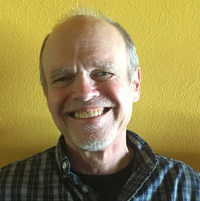Oral Motor Exercises: Pumping Iron
Blog #5 in the Phonology Means Nothing and Other Astounding and Very Practical Facts about Speech Sound Disorders Blog Series
For more information about this series, see the Phonology Means Nothing Series welcome page.

Phonetic placement and shaping sometimes is confused with nonspeech oral-motor exercises (NSOMEs). Phonetic placement and shaping rely on phonetic knowledge to convert a nonstimulable sound into a stimulable one. Stated simply: The techniques place and shape the articulators for speech. Nonspeech exercises seek to improve speech through building the strength and flexibility of the speech musculature—for example, blowing bubbles through a straw, touching the nose with the tongue, or filling the cheeks with air. Researchers have observed three problems with using nonspeech exercises to improve speech: (1) Speech uses oral structures differently than nonspeech exercises. (2) The strength requirements for speech differ from those for nonspeech exercises. (3) Speech uses different brain areas than nonspeech exercises (Clark, 2003; Forrest, 2002; Forrest & Iuzzini, 2008; Lass & Pannbacker, 2008; Lof, 2009; Muttiah, Georges, & Brackenbury, 2011; McCauley, Strand, Lof, Schooling, & Frymark, 2009; Powell, 2009; Ruscello, 2008).
To illustrate the differences between speech and swallowing, your ability to shape the tongue allows you to produce numerous speech sounds and requires very quick and precise movement of a large structure. Whereas swallowing requires greater amounts of strength, speech requires increased accuracy based on speed and timing. This difference in strength requirements is but one reason why therapy approaches for speech are different from those for swallowing.
To give another illustration, you need much less strength to posture the velopharyngeal port during speech than during swallowing. Additionally, during swallowing, the velum elevates and remains closed during the duration of the oral transit stage of swallowing. This increased closure force ensures the absence of nasal regurgitation during swallow due to the high-pressure buildup in the oral cavity and pharynx. In contrast, the speed and timing necessary for speech articulation requires much less force and its behavior is analogous to an opening and closing similar to a fluttering movement. In addition, the perception of oral speech sounds does not always require that the velum close completely. In contrast, the velum depresses for nasal speech sounds.
Stated simply: Phonetic placement and shaping are well-established and, oftentimes, clever phonetic ways to improve speech by making a nonstimulable sound more stimulable. Building muscles and flexibility through nonspeech exercises is not a reasonable, or efficacious, way to improve speech.
References
Clark, H. M. (2003). Neuromuscular treatments for speech and swallowing: A tutorial. American Journal of Speech-Language Pathology, 12, 400–415.
Forrest, K. (2002). Are oral-motor exercises useful in the treatment of phonological/articulatory disorders? Seminars in Speech and Language, 23, 15–25.
Forrest, K., & Iuzzini, J. (2008). A comparison of oral motor and production training for children with speech sound disorders. Seminars in Speech and Language, 29, 304–311.
Lass, N., & Pannbacker, M. (2008). The application of evidence-based practice to nonspeech oral motor treatments. Language, Speech, and Hearing Services in the Schools, 39, 408–421.
Lof, G. L. (2009). The nonspeech-oral motor exercise phenomenon in speech pathology practice. In C. Bowen (Ed.), Children's speech sound disorders (pp. 181–184). Oxford, UK: Wiley-Blackwell.
McCauley, R. J., Strand E., Lof, G. L., Schooling, T., & Frymark, T. (2009). Evidence-Based systematic review: Effects of nonspeech oral motor exercises on speech. American Journal of Speech-Language Pathology, 18, 343–360.
Muttiah, N., Georges, K., & Brackenbury, T. (2011). Clinical and research perspectives on nonspeech oral motor treatments and evidence-based practice. American Journal of Speech Language Pathology, 20, 47–59.
Powell, T. W. (2009). Non-speech oral motor exercises: An ethical challenge. In C. Bowen, Children's speech sound disorders (pp. 199-202). Oxford: Wiley-Blackwell.
Ruscello, D. M. (2008). Nonspeech oral motor treatment issues in children with developmental speech sound disorders. Language, Speech, and Hearing Services in Schools, 39, 380–391.
